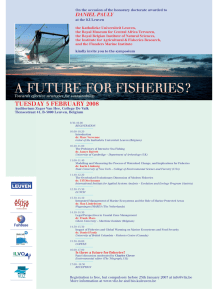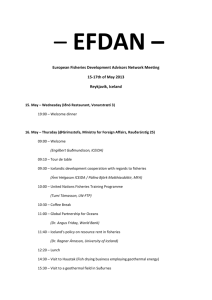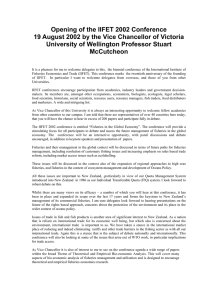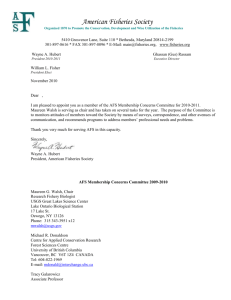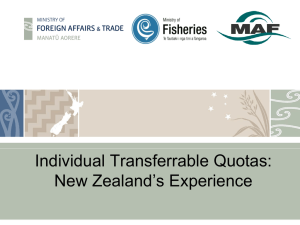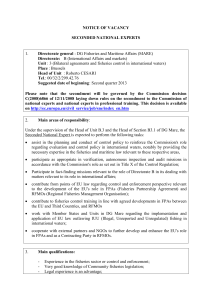Abstract 20 - Economic advice in fisheries management
advertisement
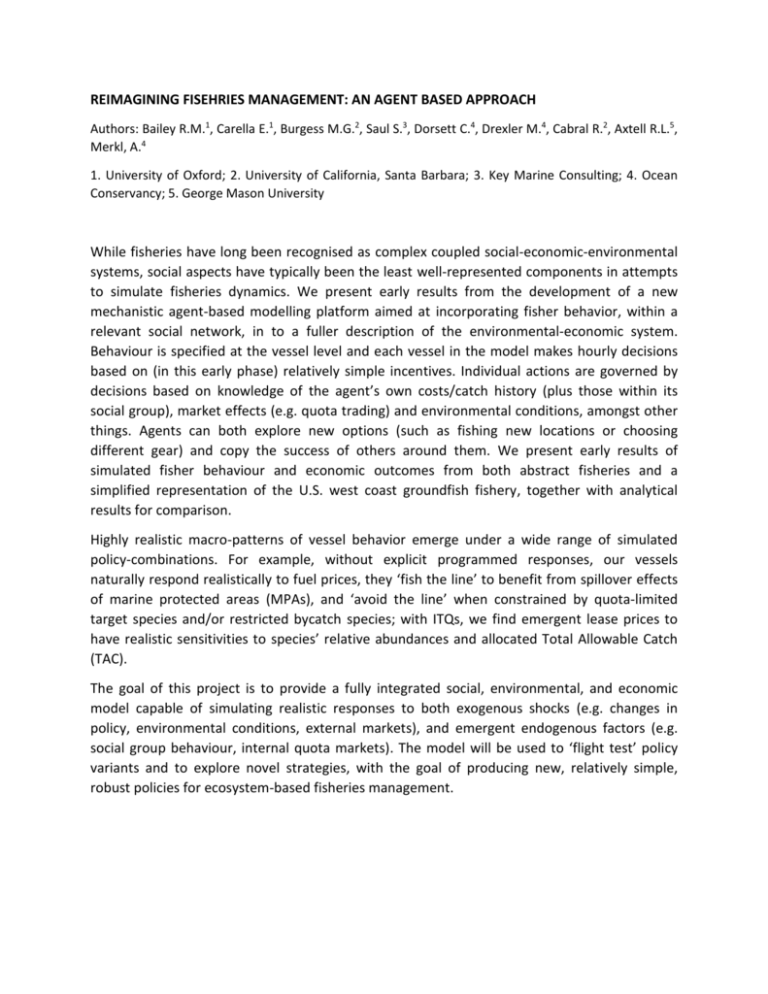
REIMAGINING FISEHRIES MANAGEMENT: AN AGENT BASED APPROACH Authors: Bailey R.M.1, Carella E.1, Burgess M.G.2, Saul S.3, Dorsett C.4, Drexler M.4, Cabral R.2, Axtell R.L.5, Merkl, A.4 1. University of Oxford; 2. University of California, Santa Barbara; 3. Key Marine Consulting; 4. Ocean Conservancy; 5. George Mason University While fisheries have long been recognised as complex coupled social-economic-environmental systems, social aspects have typically been the least well-represented components in attempts to simulate fisheries dynamics. We present early results from the development of a new mechanistic agent-based modelling platform aimed at incorporating fisher behavior, within a relevant social network, in to a fuller description of the environmental-economic system. Behaviour is specified at the vessel level and each vessel in the model makes hourly decisions based on (in this early phase) relatively simple incentives. Individual actions are governed by decisions based on knowledge of the agent’s own costs/catch history (plus those within its social group), market effects (e.g. quota trading) and environmental conditions, amongst other things. Agents can both explore new options (such as fishing new locations or choosing different gear) and copy the success of others around them. We present early results of simulated fisher behaviour and economic outcomes from both abstract fisheries and a simplified representation of the U.S. west coast groundfish fishery, together with analytical results for comparison. Highly realistic macro-patterns of vessel behavior emerge under a wide range of simulated policy-combinations. For example, without explicit programmed responses, our vessels naturally respond realistically to fuel prices, they ‘fish the line’ to benefit from spillover effects of marine protected areas (MPAs), and ‘avoid the line’ when constrained by quota-limited target species and/or restricted bycatch species; with ITQs, we find emergent lease prices to have realistic sensitivities to species’ relative abundances and allocated Total Allowable Catch (TAC). The goal of this project is to provide a fully integrated social, environmental, and economic model capable of simulating realistic responses to both exogenous shocks (e.g. changes in policy, environmental conditions, external markets), and emergent endogenous factors (e.g. social group behaviour, internal quota markets). The model will be used to ‘flight test’ policy variants and to explore novel strategies, with the goal of producing new, relatively simple, robust policies for ecosystem-based fisheries management.





